On a very rainy Saturday, May 31, 2025, 16 participants gathered at the Kinross Creek Co-op for a Buzz about Bees workshop!
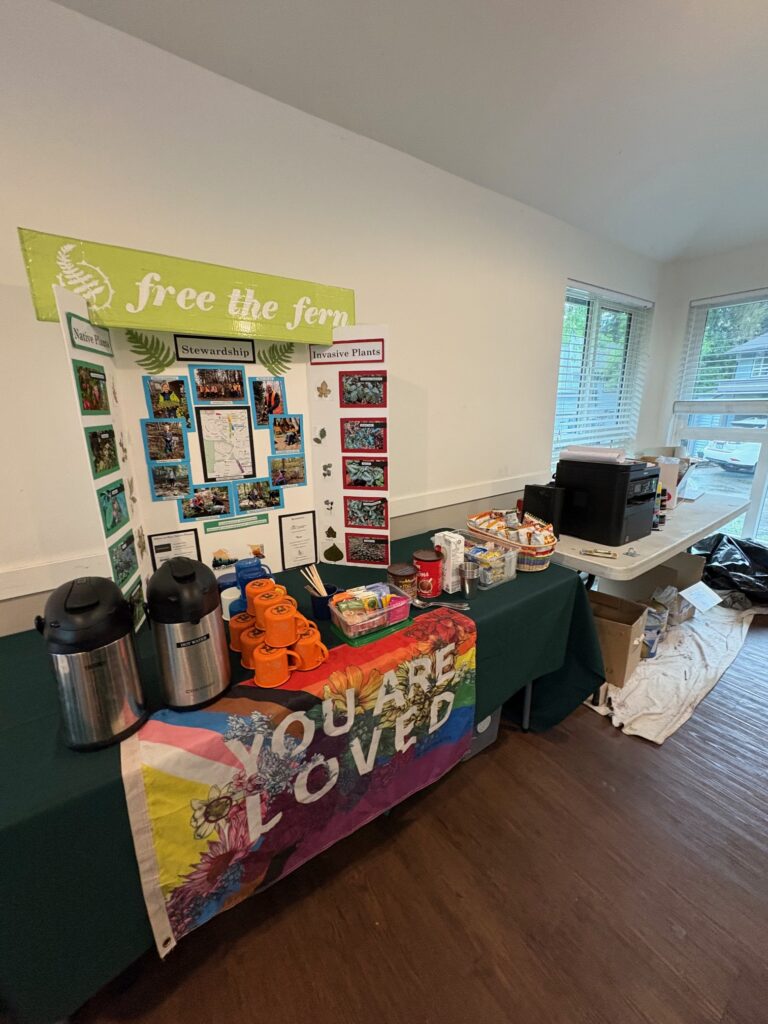

The workshop was led by nature educator, Kristen Penhall. Kristen began with a very engaging powerpoint presentation, full of photos and videos of native bees, including bumblebees, mason bees, leaf cutter bees, wool carder bees, and more!
Hisory of bees
- The first pollinators were beetles
- Bees have been around for 100 million years, since the time of dinosaurs
- When bees evolved flowering plants also took off
General bee facts
- Bees pollinate about 1/3 of our food
- There are more species of bees than birds & reptiles combined
- Bees have brains that are a cubic milimeter, but have the most dense neruons of any animal
- The smallest bees are fairy bees (1/2 size of fruite flies) and the largest bees are carpenter bees (which are as large as an adult human thumb!)

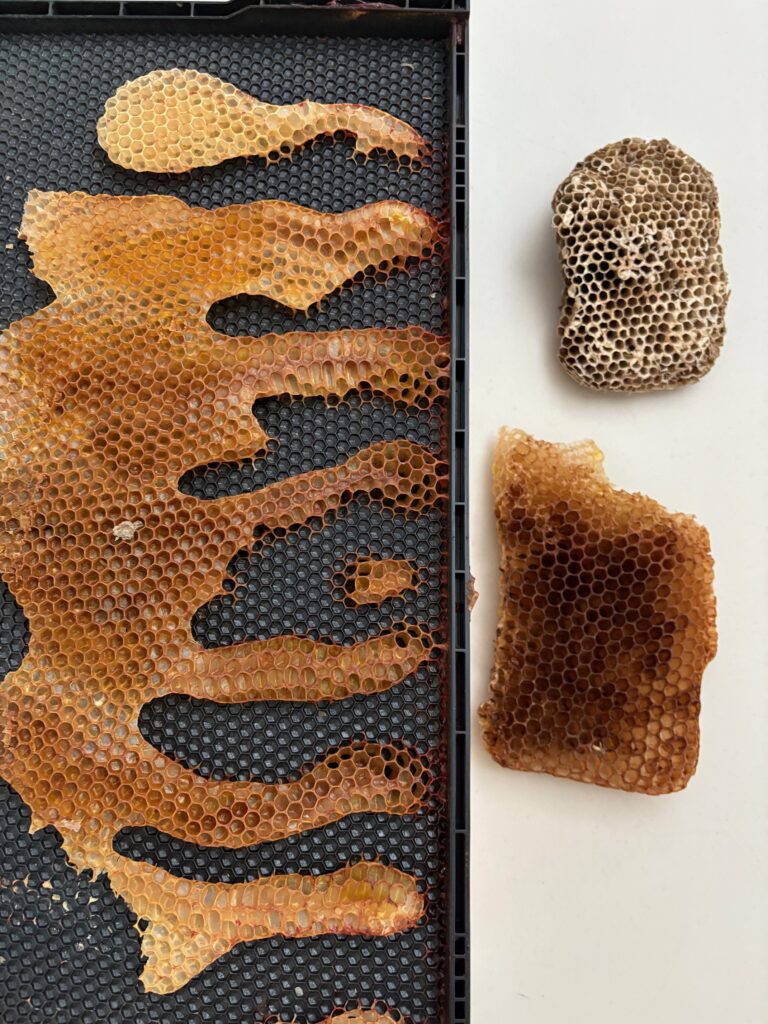
Honey bees
- Honeybees are not native to our area, but our raised as livestock for honey and pollination of crops
- Queen honeybees smell like lemongrass, whereas, bees that are stressed smell like bananas
- Honeybees are like a cruise ship that arrives in a small town that is not ready for it, as they compete with native bees and spread mites to bumblebees
- Honeybees will forage from flowers near them, which effect the taste of the honey
Wasps vs. Bees
- Bees evolved from wasps, when they started eating pollen instead of other insects
- Wasps are less effective pollinators, as they have less hair
- Wasps are generally shinier than bees
- Wasps have a “pinched” waist
Other native bees
- Bumblebees use buzz pollination to release pollen from flowers
- In the Spring mason bees break out of their cocoon that they had created for themselves the previous fall
- Leafcutter bees cut leaves to construct nests and protective structures for their offspring
- Carpenter bees are so big that they can’t fit into some flowers, so they cut into the outside of the flower to get to the nectar
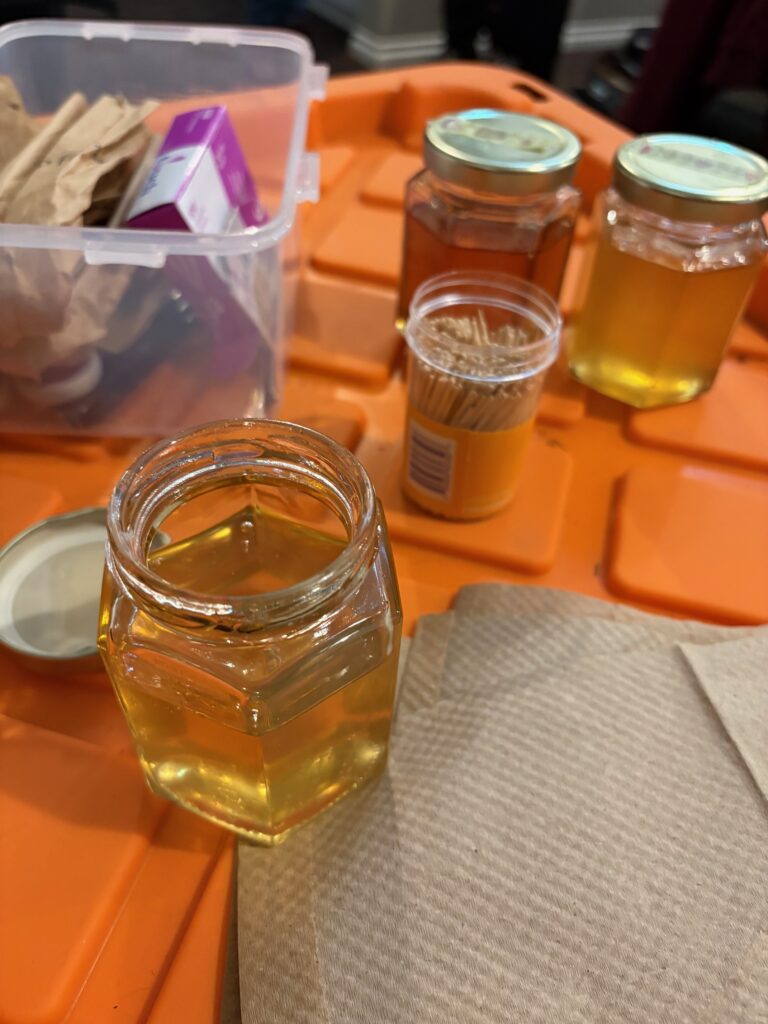
We then sampled some honey that had unique flavour based on the flowers the bees had visited, including fireweed, knapweed, and cranberry.
One-Season Mason Bee Hotels


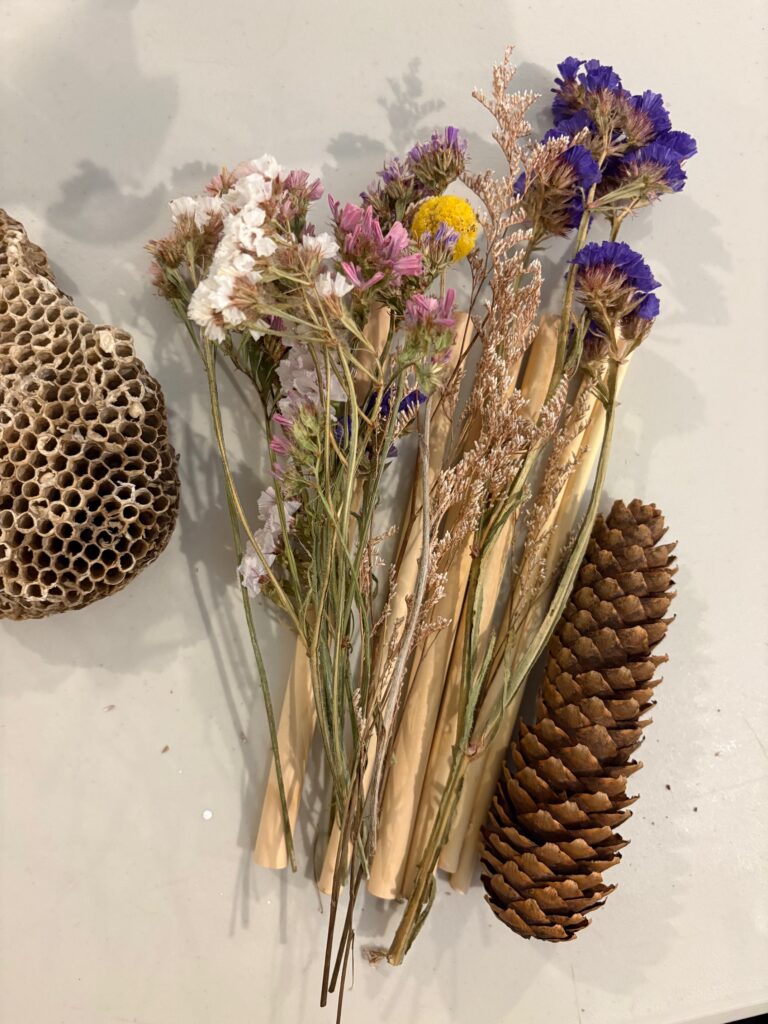
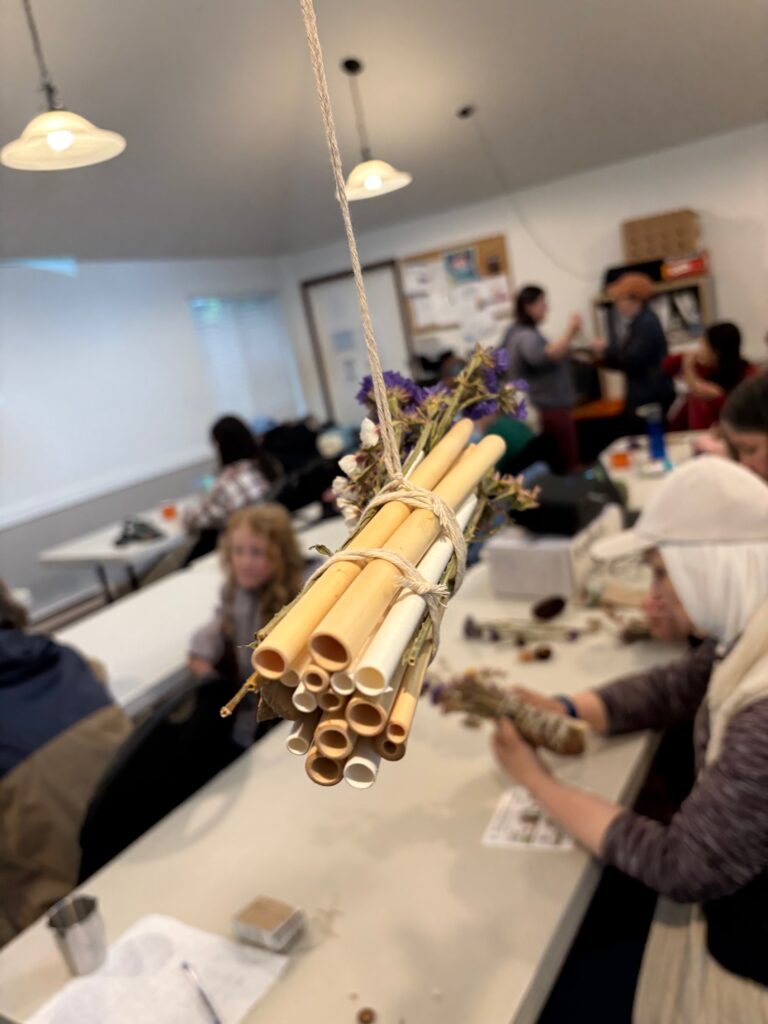

We then created one-season mason bee hotels using wooden straws, dried flower stems, pinecones, and twine.
Instructions:
- Gather 8-15 wooden straws, a few dried flower stems, dried seed pods or pinecones (optional)
- Wrapp all together by tying several lengths of twine around.
- Add one more string of twine to hang it from a tree
- Ta da! You have yourself a one-season mason bee hotel!
Thank you so much to our 16 participants who attended and to Kristen Penhall for sharing her knowledge!
This workshop was made possible thanks to generous funding from Park People.
Absolutely wonderful workshop with Kristen today, so knowledgeable and engaging. Highly recommend! Thank you for organizing, Grace!
Fantastic resource and sounds like a fun and interesting event. Just heard about you guys today and am thrilled with the work you’re doing in our collective backyard. Hope to come to an upcoming event soon.
Dylan
Parklane complex
Comments are closed.